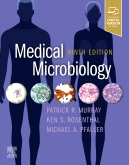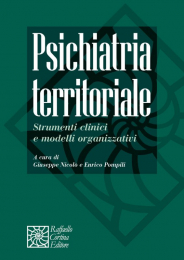Non ci sono recensioni
DA SCONTARE
Description:
The foremost text in this complex and fast-changing field, Medical Microbiology, 9th Edition, provides concise, up-to-date, and understandable explanations of key concepts in medical microbiology, immunology, and the microbes that cause human disease. Clear, engaging coverage of basic principles, immunology, laboratory diagnosis, bacteriology, virology, mycology, and parasitology help you master the essentials of microbiology-effectively preparing you for your coursework, exams, and beyond.
Table Of Contents:
SECTION 1
Introduction
1 Introduction to Medical Microbiology KEN
2 Human Microbiome in Health and Disease PAT
3 Sterilization, Disinfection, and Antisepsis PAT
SECTION 2
General Principles of Laboratory Diagnosis
4 Microscopy and In Vitro Culture PAT
5 Molecular Diagnosis KEN
6 Serologic Diagnosis KEN
SECTION 3
Basic Concepts in the Immune Response – ALL CHAPTERS KEN
7 Elements of Host Protective Responses
8 Innate Host Responses
9 Antigen-Specific Immune Responses
10 Immune Responses to Infectious Agents
11 Antimicrobial Vaccines
SECTION 4
Bacteriology
12 Bacterial Classification, Structure, and Replication KEN
13 Bacterial Metabolism and Genetics KEN
14 Mechanisms of Bacterial Pathogenesis KEN
15 Role of Bacteria in Disease PAT
16 Laboratory Diagnosis of Bacterial Diseases PAt
17 Antibacterial Agents PAT - 35
18 Staphylococcus and Related Gram-Positive Cocci
19 Streptococcus and Enterococcus
20 Bacillus
21 Listeria and Related Gram-Positive Bacteria
22 Mycobacterium and Related Acid-Fast Bacteria
23 Neisseria and Related Genera
24 Haemophilus and Related Bacteria
25 Enterobacteriaceae
26 Vibrio and Related Bacteria
27 Pseudomonas and Related Bacteria
28 Campylobacter and Helicobacter
29 Miscellaneous Gram-Negative Rods
30 Clostridium
31 Non–Spore-Forming Anaerobic Bacteria
32 Treponema, Borrelia, and Leptospira
33 Mycoplasma and Ureaplasma
34 Rickettsia, Ehrlichia, and Related Bacteria
35 Chlamydia and Chlamydophila
SECTION 5
Virology – ALL KEN
36 Viral Classification, Structure, and Replication
37 Mechanisms of Viral Pathogenesis
38 Role of Viruses in Disease
39 Laboratory Diagnosis of Viral Diseases
40 Antiviral Agents and Infection Control
41 Papillomaviruses and Polyomaviruses
42 Adenoviruses
43 Human Herpesviruses
44 Poxviruses
45 Parvoviruses
46 Picornaviruses
47 Coronaviruses and Noroviruses
48 Paramyxoviruses
49 Orthomyxoviruses
50 Rhabdoviruses, Filoviruses, and Bornaviruses
51 Reoviruses
52 Togaviruses and Flaviviruses
53 Bunyaviridae and Arenaviridae
54 Retroviruses
55 Hepatitis Viruses
56 Prion Diseases
SECTION 6 – ALL MIKE
Mycology
57 Fungal Classification, Structure, and Replication
58 Pathogenesis of Fungal Disease – add section on mycotoxins and mycotoxicoses
59 Role of Fungi in Disease
60 Laboratory Diagnosis of Fungal Disease
61 Antifungal Agents
62 Superficial and Cutaneous Mycoses
63 Subcutaneous Mycoses
64 Systemic Mycoses Caused by Dimorphic Fungi
65 Opportunistic Mycoses
66 Fungal and Fungal-Like Infections of Unusual or Uncertain Etiology
SECTION 7 – ALL MIKE
Parasitology
67 Parasitic Classification, Structure, and Replication
68 Pathogenesis of Parasitic Diseases
69 Role of Parasites in Disease
70 Laboratory Diagnosis of Parasitic Disease
71 Antiparasitic Agents
72 Intestinal and Urogenital Protozoa
73 Blood and Tissue Protozoa
74 Nematodes
75 Trematodes
76 Cestodes
77 Arthropods




